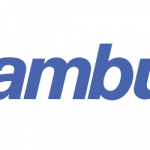Quantum News Briefs August 23: Advances in quantum emitters mark progress toward a quantum internet; WISeKey’s Subsidiary, SEALSQ’s post-quantum chips designed to improve AI performance in semiconductors; US Navy working to harness benefits of quantum computing at warfare centers specializing in R&D + MORE

Quantum News Briefs August 23:
Advances in quantum emitters mark progress toward a quantum internet
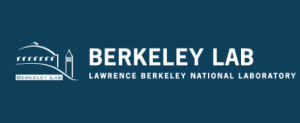 The prospect of a quantum internet, connecting quantum computers and capable of highly secure data transmission, is enticing, but making it poses a formidable challenge. Transporting quantum information requires working with individual photons rather than the light sources used in conventional fiber optic networks. To produce and manipulate individual photons, scientists are turning to quantum light emitters. Quantum News Briefs summarizes August 22 article in Phys.org by Alison Hatt, at Lawrence Berkeley National Laboratory
The prospect of a quantum internet, connecting quantum computers and capable of highly secure data transmission, is enticing, but making it poses a formidable challenge. Transporting quantum information requires working with individual photons rather than the light sources used in conventional fiber optic networks. To produce and manipulate individual photons, scientists are turning to quantum light emitters. Quantum News Briefs summarizes August 22 article in Phys.org by Alison Hatt, at Lawrence Berkeley National Laboratory
A team of researchers has recently demonstrated a more effective technique for creating quantum emitters using pulsed ion beams, deepening our understanding of how quantum emitters are formed. The work was led by Department of Energy Lawrence Berkeley National Laboratory (Berkeley Lab) researchers Thomas Schenkel, Liang Tan, and Boubacar Kanté who is also an associate professor of electrical engineering and computer sciences at the University of California, Berkeley.
The results appeared in Physical Review Applied and are part of a larger effort by the team to identify the best quantum defect emitters for processing and transporting quantum information and to produce them with precision.
“The color centers we’re making are candidates for becoming the backbone of a quantum internet and a key resource for scalable quantum information processing,” said Schenkel, a senior scientist in Berkeley Lab’s Accelerator Technology & Applied Physics (ATAP) Division. “They could support linking quantum-computing nodes for scalable quantum computing.”
In this work, the team targeted the fabrication of a specific type of color center in silicon comprising two substitutional carbon atoms and a slightly dislodged silicon atom. The conventional method of producing the defects is to hit the silicon with a continuous beam of high-energy ions; however, the researchers discovered that a pulsed ion beam is significantly more efficient, producing many more of the desired color centers.
“We were surprised to find these defects can be more easily generated with pulsed ion beams,” said Wei Liu, a postdoctoral scholar in ATAP and first author of the publication. “Right now, industry and academia mainly use continuous beams, but we’ve demonstrated a more efficient approach.” Click here to read the article in-entirety.
WISeKey’s Subsidiary, SEALSQ’s post-quantum chips designed to improve AI performance in semiconductors
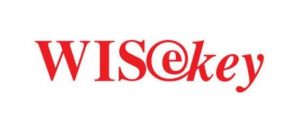 WISeKey International Holding Ltd. announced on August 18 that its Semiconductors & PKI subsidiary SEALSQ Corp. (NASDAQ: LAES) comprehensive post-quantum chips are designed to improve AI performance in semiconductors, bringing unprecedented capabilities to the technology world. Quantum News Bries summarizes the announcement.
WISeKey International Holding Ltd. announced on August 18 that its Semiconductors & PKI subsidiary SEALSQ Corp. (NASDAQ: LAES) comprehensive post-quantum chips are designed to improve AI performance in semiconductors, bringing unprecedented capabilities to the technology world. Quantum News Bries summarizes the announcement.
SEALSQ’s wide range of solutions include secure elements, root of trust, cryptographic keys, and hardware security modules, underscore SEALSQ’s commitment to spearheading technological advancements while fortifying semiconductors against potential vulnerabilities.
Key features of the SEALSQ Post-Quantum chips include:
Quantum Speedup: Leveraging quantum superposition, these chips promise enormous data processing capabilities. Innovations like Grover’s and Shor’s algorithms can potentially shorten AI training times and enable faster inferencing.
Quantum Annealing & Optimization: The chips harness quantum annealing, allowing AI systems to find optimized solutions more rapidly than traditional methods, especially vital in machine learning contexts.
Quantum Machine Learning: Groundbreaking research in quantum machine learning is at the heart of SEALSQ’s chip, promising improvements in AI performance, speed, and accuracy.
Post-Quantum Cryptography: With rising security concerns around quantum computing, SEALSQ chips prioritize post-quantum cryptographic methods, ensuring resistance to quantum computing attacks.
Quantum Networking & Communication: The integrated quantum communication methods, including quantum key distribution, provide ultra-secure channels, crucial for safeguarding sensitive AI data.
Quantum-enhanced Sensors: The SEALSQ chips feature advanced quantum-based sensors, offering the semiconductor industry heightened precision in testing and quality control. Click here to read the news announcement in-entirety.
US Navy working to harness benefits of quantum computing at warfare centers specializing in R&D
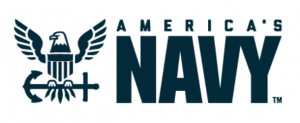 Quantum computing has the potential to exponentially improve the way the U.S. Navy operates. according to a recent article by the public affairs office of the Naval Undersea Warfare Center Division . Quantum News Briefs summarizes.
Quantum computing has the potential to exponentially improve the way the U.S. Navy operates. according to a recent article by the public affairs office of the Naval Undersea Warfare Center Division . Quantum News Briefs summarizes.
Possibilities include improved processing time that would quickly advance machine learning and autonomy efforts, the removal of noise clutter would optimize sensing, and encryption methods would become virtually impenetrable.
This field has been active for more than 50 years, but much of quantum computing’s benefits remain in the theoretical stage. The Navy’s efforts to harness the benefits of quantum computing are ongoing at warfare centers specializing in research and development.
Small teams at the Naval Information Warfare Center Pacific (NIWCPAC) and the Naval Surface Warfare Center (NSWC) Dahlgren have been researching quantum computing and developing algorithms while at the Naval Undersea Warfare Center (NUWC) Division Newport, physicist Mike Warnock serves as the quantum research point person.
Quantum computing work performed in the Navy is sparse, although there are research efforts at the Naval Research Laboratory and funding sources such as the Office of Naval Research. The Navy, as a whole, has recently begun investing more in quantum computing, Warnock said.
“There are some quantum computing efforts at NSWC Dahlgren and NIWCPAC that have been going on for years, but the majority of other warfare centers — including NUWC Division Newport — haven’t had any quantum computing programs that are as mature as either of those two,” Warnock said.
However, because of the efforts of Warnock and his colleagues, Division Newport has started to be considered a more mature program in terms of knowledge of the field in comparison to other warfare centers. NSWC Carderock and the Applied Research Laboratory at Pennsylvania State University (ARL-PSU) are looking to Warnock’s expertise for some collaborative efforts.
Navy researchers have access to IBM’s 54-qubit quantum computer. In December 2022, NRL and all 14 warfare centers signed a memorandum of understanding with the Air Force Research Laboratory’s (AFRL) Information Directorate “to establish a conduit for exchange of technical expertise and the exploration of co-projects with a focus on creating useful quantum computing capabilities for the Department of Defense.”
The agreement gives Navy scientists and engineers access to IBM’s advanced quantum computing systems, through the AFRL’s hub in the IBM Quantum Network, providing the ability to explore Navy-relevant problem sets focused on operations research, quantum machine learning, quantum simulation, classical simulation and crypto-analysis. Researchers need only pay for the waiver in order to get access to IBM’s machine. Click here to read the article in-entirety.
SandboxAQ collaborates with more than 30 universities, corporations & educational organizations to expand AI & quantum training
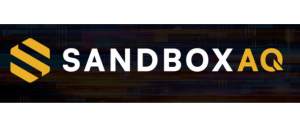 SandboxAQ announced on August 15 it has formed relationships with more than 30 major universities and other educational organizations and has hit key milestones in co-training masters and PhD students with universities in AI, quantum, cyber and other key technologies. Quantum News Briefs summarizes the announcement.
SandboxAQ announced on August 15 it has formed relationships with more than 30 major universities and other educational organizations and has hit key milestones in co-training masters and PhD students with universities in AI, quantum, cyber and other key technologies. Quantum News Briefs summarizes the announcement.
“We realized that the increasing industry demand for advanced technologies would result in a severe shortfall of highly skilled AI and quantum tech talent. To address this, SandboxAQ forged partnerships with some of the world’s top universities to create a steady pipeline of talent and prepare graduates for cutting-edge jobs throughout the quantum industry,” said Jack Hidary, CEO of SandboxAQ. “In addition to working with universities, we are providing training to corporate partners to upskill their workforces in AI and quantum technologies.”
SandboxAQ’s university relationships include:
- Residency Program: We have drawn students from more than 45 universities including Imperial College London, Cambridge University, University of Edinburgh, Swiss Federal Institute of Technology Lausanne (EPFL), Caltech, Harvard University, Stanford University, Princeton University, Duke University, and other leading institutions.
- Curriculum Development at four higher-ed organizations including New York University (NYU) and University of Mondragon
- Grants to The City University of New York (CUNY) Graduate Center
- Fellowships to faculty and students: University of California Merced, University of Mondragon and three others
- Talks/Seminars at The City University of New York (CUNY), New York University, Czech Technical University and many more.
Click here to read the announcement in-entirety.
Sandra K. Helsel, Ph.D. has been researching and reporting on frontier technologies since 1990. She has her Ph.D. from the University of Arizona.



















